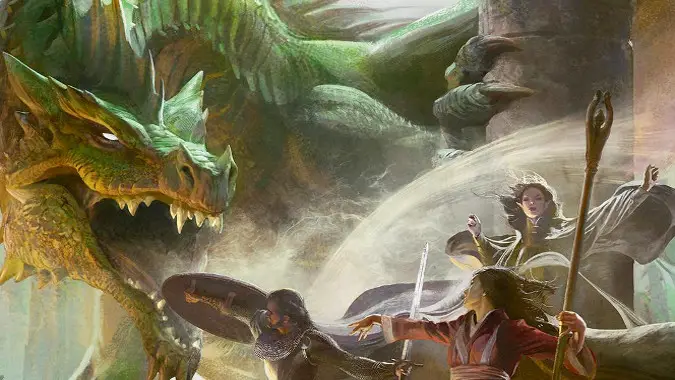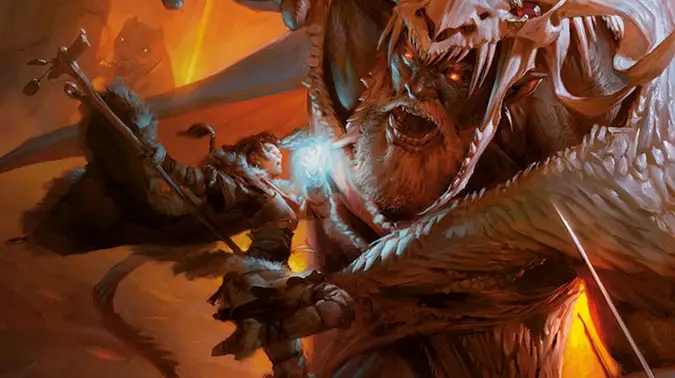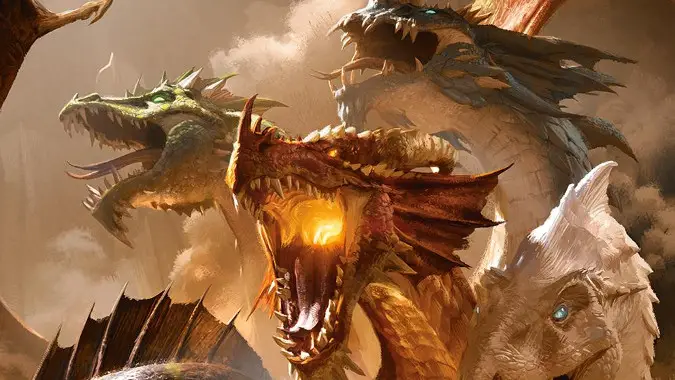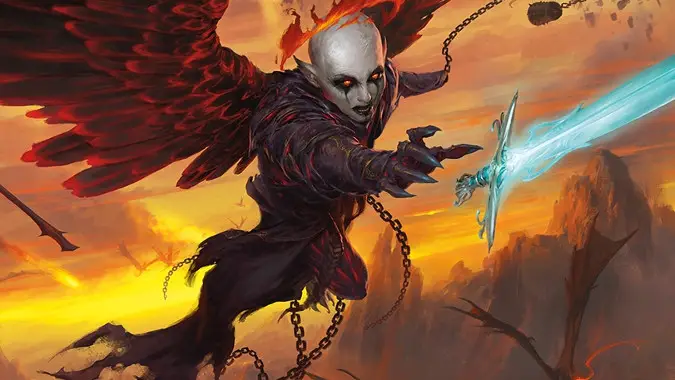Dungeons and Dragons 101: A beginner’s guide to the tabletop roleplaying game

Dungeons and Dragons is more popular now than it has been in years, if not more popular than it has ever been. With the advent of real play streaming and podcasts like Critical Role, The Adventure Zone, Oxventure and others (heck, even we did a D&D podcast) more people are interested in getting into Dungeons and Dragons than I can remember ever seeing before. And I’ve been playing for almost thirty seven years now.
So, if you’re new to the game or an old hand looking to get back into it, what do you need to play? What are the necessities, and what else can you do to get started playing this crazy game? Well, we’ll break it down for you, starting from the absolute minimum you need to play and then moving to useful — but not strictly speaking necessary — additions.
Note — this article assumes you’ll be playing Dungeons and Dragons‘ Fifth Edition, or D&D 5e. It’s the biggest name and most widespread RPG out there so it’s the starting point for this article, but there are many other rulesets and varied worlds out there for RPG players to explore. If you want to know how to get started playing a different game, let us know — maybe we can write up a 101 post for your favorite game.

The Basics
In order to join a D&D game as a player, you need the following — A copy of the D&D 5E Player’s Handbook or an equivalent source of the rules, such as the official 5th Edition System Reference Document. Note — the SRD contains the rules, but in a stripped down format which is not as new player friendly as the Player’s Handbook is. While there are two other core rulebooks for D&D 5E, you don’t need them to start playing — they’re more useful for players who want to run a game as the Dungeon Master.
You’ll also need a set of gaming dice or a dice roller program of some kind. Your DM may already be using a dice roller. In the podcast D&D game the Blizzard Watch gang played, we used a Discord bot called Sidekick to roll dice for us. That’s only one of many such bots used when people play online. Some folks play on Roll20 which has its own dice rolling functionality, while if you’re playing the game live there are various programs you can use on a laptop or a smart phone. An extra benefit to using virtual dice is that many of them do all the math and figure in all your modifiers for you.
Dice in general for D&D come in various sizes, from the d4 to the d6, d8, d10, d12 and d20. The number after the letter d refers to the number of sides per die, so a d4 has 4 sides and can generate a number between 1 and 4, while a d20 has 20 sides and generates a number between 1 and 20. Sometimes games will use 2 10 sided dice to generate what is called a percentile roll, where one of the two dice is used as the 10’s digit and the other as the single digit, rolling from 01 to 100. When you are expected to roll more than one of a specific die, you’ll be told to roll, as an example 2d6 or 5d12. The number in front of the d is the number of dice you’ll roll, while the number after is the size of the die in question.
It may sound daunting, but in reality, most of the time you’ll be rolling 1d20 and adding modifiers to try and get higher than a certain number and it’s a lot easier than it sounds.
You’ll likely need a character sheet. There are various ways to go about getting one — you can download an editable PDF from the official Dungeons and Dragons site, or use a site like D&D Beyond to make characters for you, or even just print the Character Sheet out via a copy machine or your printer and fill it out with a pencil. That’s what I did for years, but nowadays I just use D&D Beyond because, well, it’s pretty easy to use.

Getting more advanced
If you’re planning on actually running a game, first up, please remember that being a Dungeon Master doesn’t mean you’re not also a player. The DM is playing too, and a lot of times players forget that — I found myself enjoying DMing a lot more when I made myself remember I was just as much there to have fun as anyone else. So, if you’re there to have fun and play the game as a DM, what do you need to do that? At a minimum, in addition to the Player’s Handbook and some dice?
There are two other core rulebooks that are pretty essential for an aspiring DM. The first is the Dungeon Master’s Guide, which you can think of as a big toolkit for people who want to run D&D. The Player’s Handbook has the rules you need to play, like what kinds of spells there are, how to adjudicate combat, and so on. The Dungeon Master’s Guide helps you figure out how to build a world for your players to adventure in, how to populate it with characters and adventures, how to make your own monsters and challenges for them to overcome — it’s a very useful set of tools to make the job of making a world for your players easier. It also gives plenty of useful advice on how to run a game, how to keep various player interests in mind and try and meet them, how to adjudicate the rules without bogging down your game and more. You can theoretically run a game of D&D without ever once needing to look in the DMG, but when you need it you’ll be glad you have it.
After the DMG, the next book an aspiring DM should grab is the Monster Manual, which is something you might not really need, as such. You could use the DMG to create plenty of monsters and NPCs for your party to face. The Monster Manual is useful because it does a lot of that work for you, providing you with example statistics for a wide variety of monsters so you don’t have to spend hours of your time writing up stat blocks for everything your party might face over the course of a game. It’s a precious resource and it can make your life so much easier, so I heartily recommend it.

But wait, there’s more!
Indeed, there are more things you as a player might want to get for your new D&D game. There are mats and miniatures vs. theatre of the mind style play — if you’ve watched Critical Role for example, they run their combats using miniatures while also engaging in a lot of theatre of the mind roleplaying, while other games like the Oxventure videos don’t use miniatures much if at all. There are sites that help you streamline your game like the aforementioned D&D Beyond and there are others like Roll20 that essentially let you create a map and do virtual miniatures and automatic dice rolling all in one place. We’ll definitely cover all of those in future articles.
But for right now, the basics are simple. For a player, get some dice or a dice roller, a Player’s Handbook, and a notebook for notes as well as a character sheet for your character. For a Dungeon Master you need all of that, a few more notebooks for campaign notes, and the Dungeon Master’s Guide and Monster Manual, at a bare minimum. That should be enough to get you started on your adventures in Dungeons and Dragons.
Still need a bit more guidance? Try looking through our articles on how to choose a character class or race, or our guide on creating a fun, unique character of your own.
Please consider supporting our Patreon!
Join the Discussion
Blizzard Watch is a safe space for all readers. By leaving comments on this site you agree to follow our commenting and community guidelines.
 @MatthewWRossi
@MatthewWRossi



